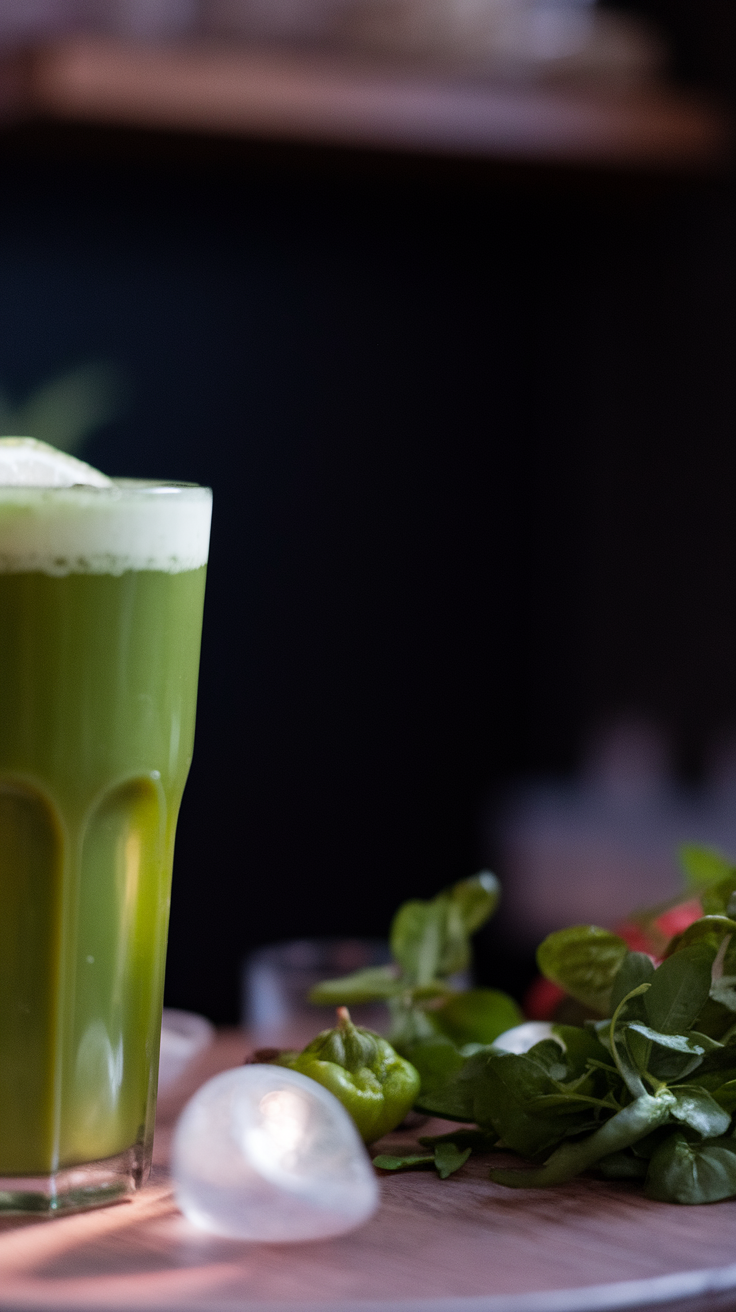Juicing—it’s like capturing the essence of a summer garden in a glass. Imagine vibrant greens and tangy fruits dancing together, creating a symphony of flavors. I stumbled upon these recipes during a health kick last spring, and they’ve become my secret weapon for turning an average meal into something.
. . transcendent.
Steps
- Green Juice
- Gather a handful of spinach leaves, half a green apple (core removed), a half-inch piece of peeled ginger, and a quarter of a peeled lemon.
- Blend these ingredients, adding water to achieve your desired consistency.
- Carrot and Ginger Juice
- Prepare two medium peeled carrots, a half-inch piece of peeled ginger, and a quarter of a peeled lemon.
- Blend the ingredients while adding water gradually until you reach the texture you prefer.
- Apple and Kale Juice
- Take one apple (core removed), three kale leaves, one celery stalk, and half a cucumber.
- Blend these together, adding water as necessary to reach the consistency you like.
- Beetroot and Berry Blast
- Use half a peeled beetroot, an eighth of a cup of strawberries (tops removed), an eighth of a cup of raspberries, and a quarter of a peeled lemon.
- Blend all items, adjusting consistency with water to your taste.
- Citrus and Celery Juice
- Collect one peeled orange, one celery stalk, and a quarter of a cucumber.
- Blend the ingredients, adding water to adjust to your desired consistency.
- Pineapple and Spinach Juice
- Prepare one cup of pineapple chunks, one cup of spinach, half an apple (core removed), and a quarter of a peeled lemon.
- Blend everything together, adding water to achieve your preferred texture.
- Watermelon Mint Juice
- Gather one cup of seedless watermelon chunks, six to eight fresh mint leaves, and half a peeled lime.
- Blend these ingredients, adding water to reach your desired consistency.

Ingredients
- Green Juice
- A handful of spinach leaves
- Half a green apple, core removed
- Half an inch of peeled ginger
- A quarter of a peeled lemon
- Water, as needed for preferred thickness
- Carrot and Ginger Juice
- Two medium-sized carrots, peeled
- Half an inch of peeled ginger
- A quarter of a peeled lemon
- Water, as needed for desired consistency
- Apple and Kale Juice
- One apple, core removed
- Three kale leaves
- One stalk of celery
- Half a cucumber
- Water, as required for preferred consistency
- Beetroot and Berry Blast
- Half a beetroot, peeled
- 1/8 cup of strawberries, tops removed
- 1/8 cup of raspberries
- A quarter of a peeled lemon
- Water, as needed to achieve the desired texture
- Citrus and Celery Juice
- One orange, peeled
- One celery stalk
- A quarter of a cucumber
- Water, as needed to reach preferred thickness
- Pineapple and Spinach Juice
- One cup of pineapple chunks
- One cup of spinach leaves
- Half an apple, core removed
- A quarter of a peeled lemon
- Water, as necessary for desired consistency
- Watermelon Mint Juice
- One cup of seedless watermelon chunks
- Six to eight fresh mint leaves
- Half a peeled lime
- Water, as needed for preferred texture
FAQ
- What exactly is juicing?
- Juicing involves extracting the natural juices from fruits and vegetables using a device called a juicer. This process separates the liquid from the solid components like pulp and seeds, which are often discarded or repurposed.
- What are some considerations to keep in mind when juicing?
- A key concern with juicing is the loss of fiber, as the fiber-rich parts of fruits and vegetables are typically removed. Fiber is essential for digestion, blood sugar regulation, and promoting satiety. Without it, juice sugars can be absorbed more quickly, potentially causing blood sugar spikes.
- Can juicing help with weight management?
- While juicing on its own doesn’t cause weight loss unless combined with calorie restriction, it can provide vital nutrients that contribute to a balanced diet. Moderation is key, as 100% juice without added sugars can be a healthy part of your weight management plan.
- What are the nutritional benefits of fruit and vegetable juices?
- Juices from fruits and vegetables are rich in vitamins and minerals. They provide micronutrients at levels comparable to whole fruits, though they have less fiber. They may also offer benefits for cardiovascular health, such as reducing blood pressure and improving lipid profiles.
- Are there health benefits specific to certain juices?
- Yes, different juices have unique health benefits. For example, beetroot juice may enhance athletic performance and support heart health, while citrus juices are high in vitamin C, an antioxidant that protects cells from free radical damage. Mixtures of different juices can provide a variety of antioxidants, vitamins, and minerals.
Tips
- Remember to adjust the consistency of your juice by adding water as needed, which can help achieve your desired texture and enhance drinkability.
- While juicing, consider saving the fiber-rich pulp for use in other recipes, such as baked goods or composting, to make full use of the produce.
- Keep in mind that although juicing can provide essential vitamins and minerals, it lacks the fiber found in whole fruits and vegetables, so balance your diet accordingly.
- Moderation is key; consuming 100% juice without added sugars can be part of a healthy diet, but be mindful of the natural sugars present in the juice.
Equipment
- Juicer – A machine specifically designed to extract juice from fruits and vegetables by separating the liquids from the solids.

